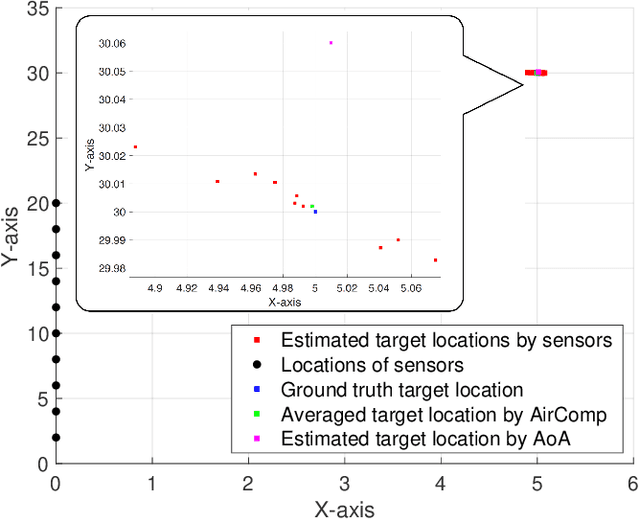Integrated Sensing and Over-the-Air Computation: Dual-Functional MIMO Beamforming Design
Paper and Code
Jan 29, 2022



To support the unprecedented growth of the Internet of Things (IoT) applications and the access of tremendous IoT devices, two new technologies emerge recently to overcome the shortage of spectrum resources. The first one, known as integrated sensing and communication (ISAC), aims to share the spectrum bandwidth for both radar sensing and data communication. The second one, called over-the-air computation (AirComp), enables simultaneous transmission and computation of data from multiple IoT devices in the same frequency. The promising performance of ISAC and AirComp motivates the current work on developing a framework that combines the merits of both called integrated sensing and AirComp (ISAA). Two schemes are designed to support multiple-input-multiple-output (MIMO) ISAA simultaneously, namely the shared and separated schemes. The performance metrics of radar sensing and AirComp are evaluated by the mean square errors of the estimated target response matrix and the received computation results, respectively. The design challenge of MIMO ISAA lies in the joint optimization of radar sensing beamformers and data transmission beamformers at the IoT devices, and data aggregation beamformer at the server, which results in complex non-convex problem. To solve this problem, an algorithmic solution based on the technique of semidefinite relaxation is proposed. The results reveal that the beamformer at each sensor needs to account for supporting dual-functional signals in the shared scheme, while dedicated beamformers for sensing and AirComp are needed to mitigate the mutual interference between the two functionalities in the separated scheme. The use case of target location estimation based on ISAA is demonstrated in simulation to show the performance superiority.
 Add to Chrome
Add to Chrome Add to Firefox
Add to Firefox Add to Edge
Add to Edge